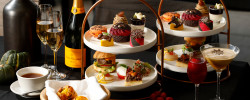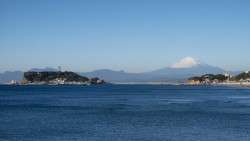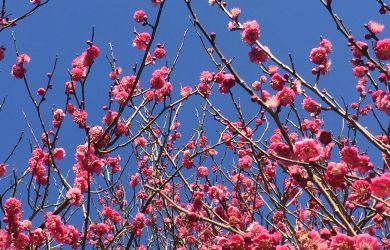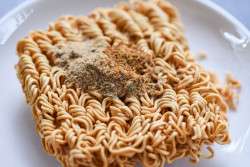
Originally published on metropolis.co.jp on August 2012

Having walked past Warayakiya many times, and always thought it looked beautiful but probably too touristy and very expensive, we decided to try it out when friends were in from out of town. Turns out we were wrong on both counts.
We booked Saturday morning for that night to be rewarded with the best table in the house—one running the length of the open front windows. Seating is also available on the deck outside, or at the counter to witness the chefs employing the technique from which the restaurant gets its name.
The warayaki cooking method from Kochi in Shikoku uses straw instead of coal for a greater burning temperature. The 900-degree Celsius fire is perfect for lightly searing food without touching the insides. A favorite recipient of this nifty trick is Kochi’s specialty, katsuo (bonito).
This is the flagship dish of Warayakiya (¥1,280), and the slabs of red seared fish, served with slices of garlic, wasabi and crystal salt on the side, are like buttery steaks. The meatiness is locked up in a soft, wanton texture, and we eschewed soy sauce in favor of the crystal salt to avoid undue influence on its purity. It’s worth coming here for this dish alone.
But while you’re at it of course, you might as well order more from the pictorial menu (available in English). We tried the deep-fried eel (crunchy on the outside, gooey on the inside; ¥680), the seared mackerel sushi (spectacular; ¥880), and a surprise hit: the deep-fried sweet potato (¥580) that tasted like an exquisite fairground treat.
While all this was going on we were tucking into varieties of sake at an alarming rate (from ¥380). The entertaining list features a grid with two axes: sweet versus dry on one, light vs. strong on the other, with the labels distributed accordingly. We carried out some tastings and failed miserably at guessing which was which. Though we did successfully get drunk.
The décor, with a wooden porch-like facade, subtle lighting and a summer breeze wafting in from the street, gives a classy burnish to the proceedings—as does the mostly Japanese urbanite crowd chattering and noshing away. The only incongruous element to the experience was, happily, the price. For ten or so dishes, half a dozen tokkuri of sake, two rounds of shochu sours (from ¥480) and even a digestif to round it off, the damage was an undamaging ¥4,000 per head. Maybe it’s got something to do with the price of straw.







